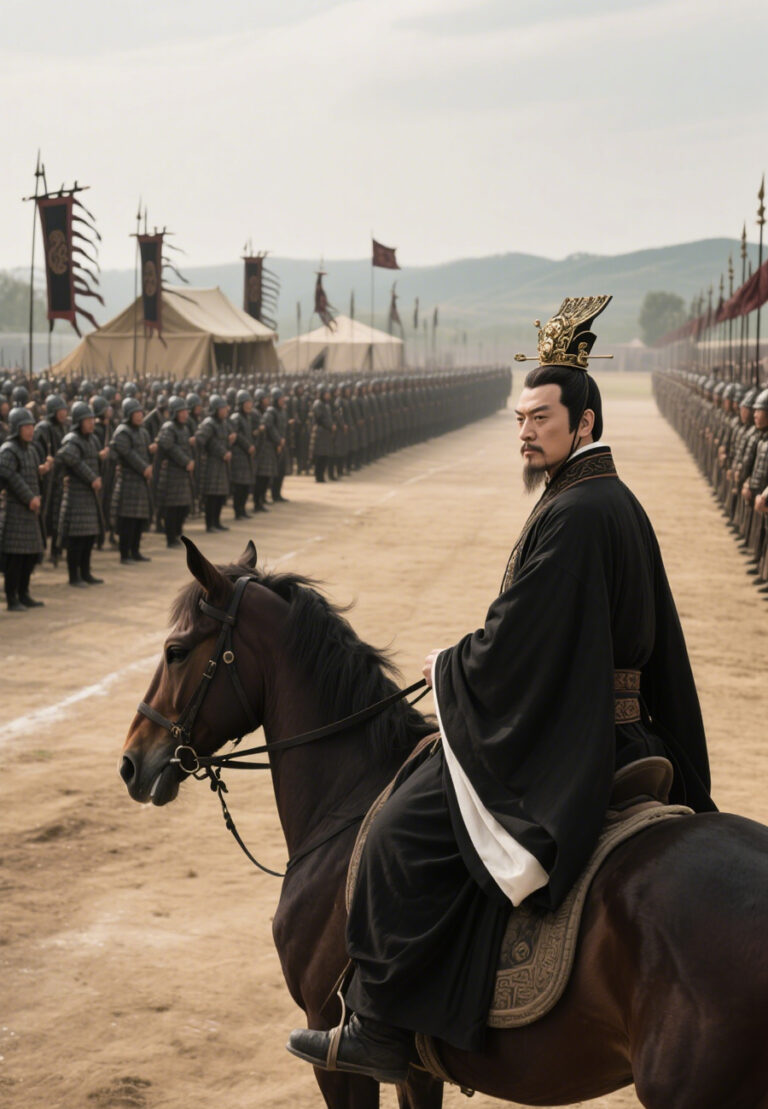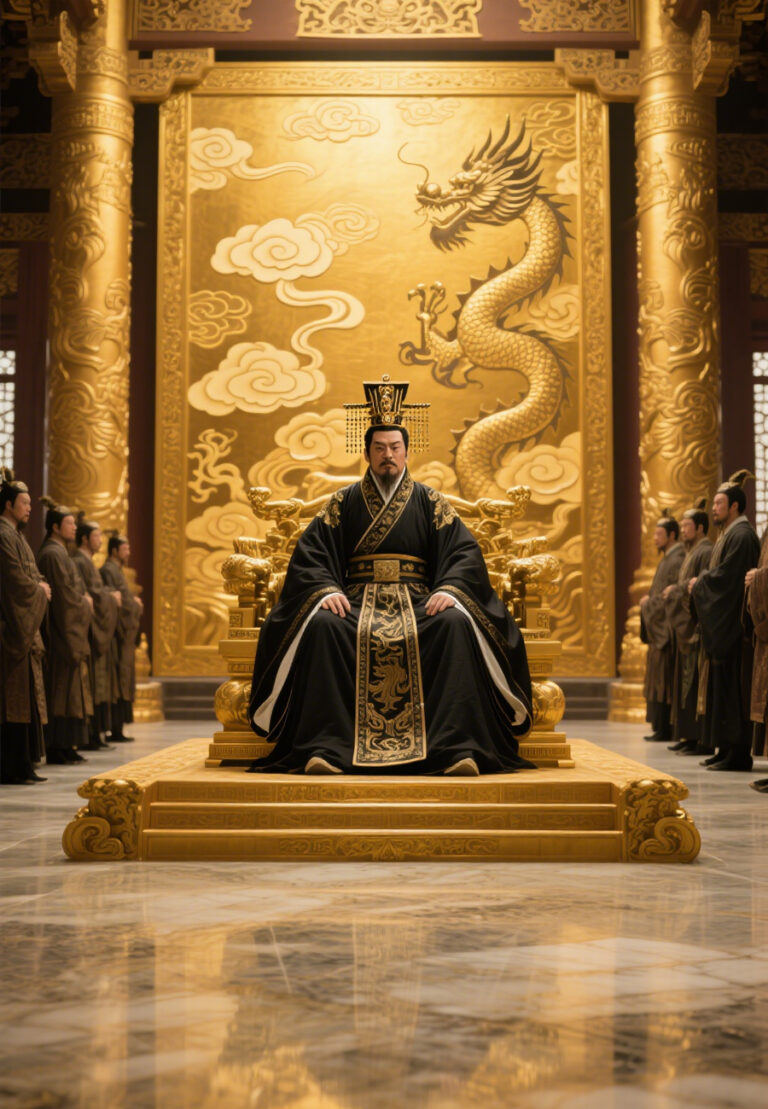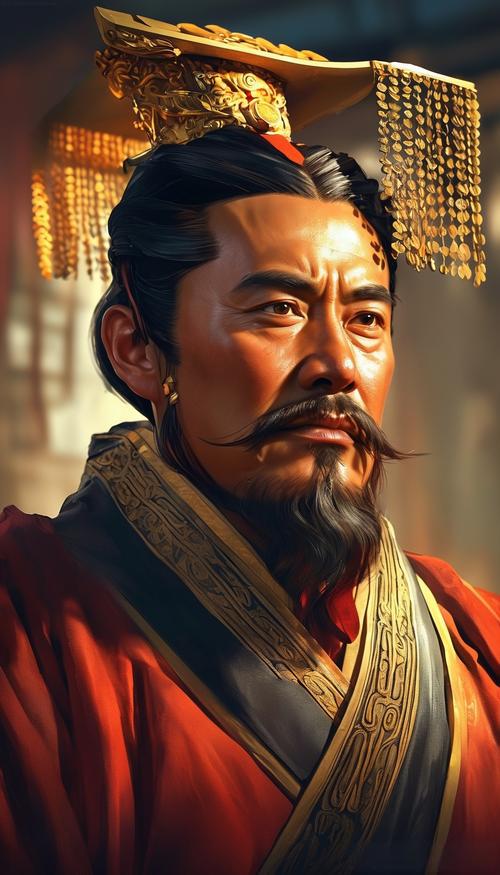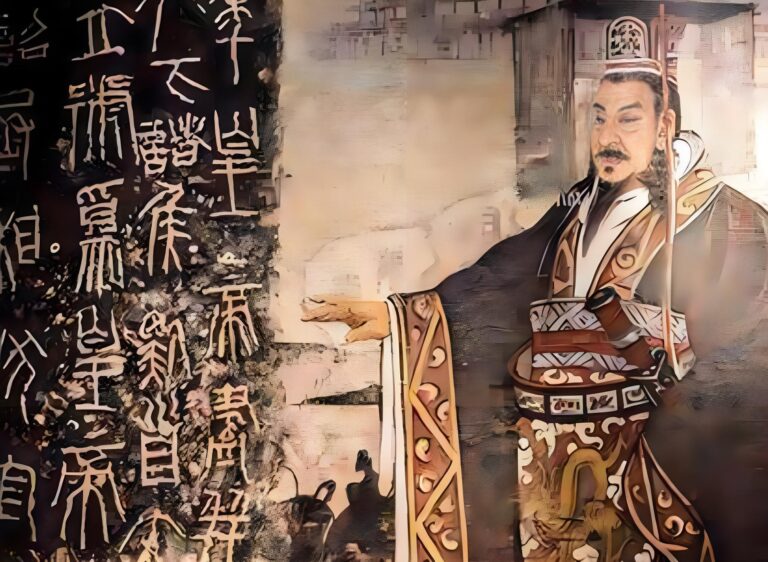Why does Qin Shi Huang wear a blindfold?
Qin Shi Huang’s “Beaded Curtain”: The Secret Behind the Emperor’s Funky Hat Accessory
Hey folks! So you’ve probably seen pictures of Qin Shi Huang—you know, China’s first emperor, the guy who built the Terracotta Army and the Great Wall. He’s always wearing this fancy hat with what looks like a bunch of tiny beads hanging down in front of his eyes, right? First time you see it, you’re probably thinking:
“Wait… why put a bead curtain in your line of sight? Was he worried about tripping?”
Or maybe:
“Ancient Chinese sunglasses? Seriously?”
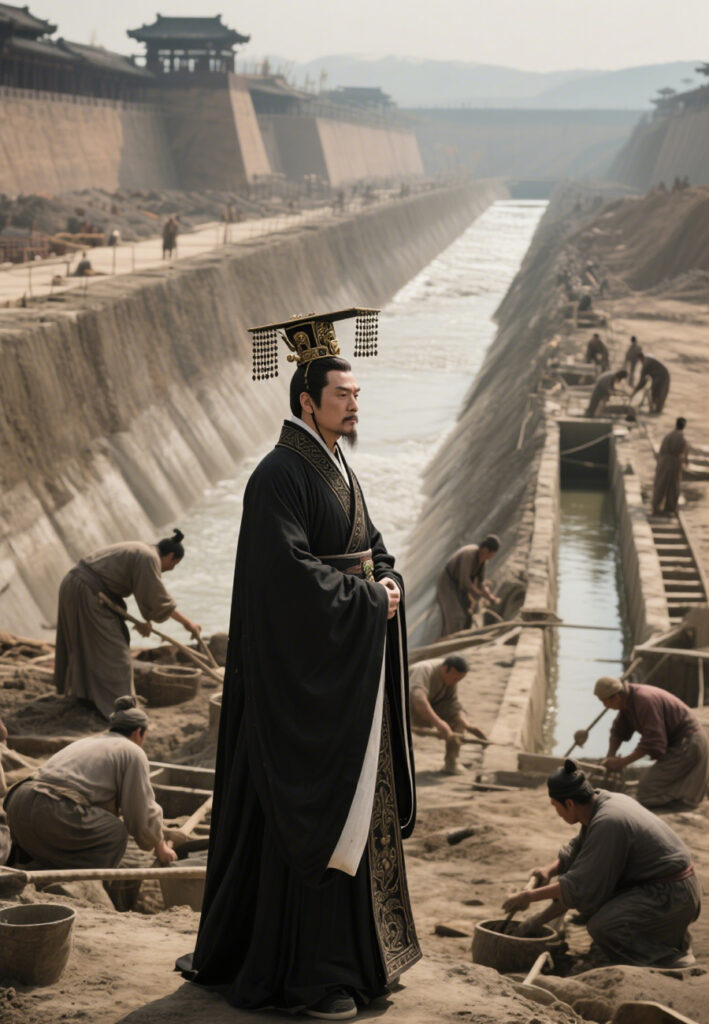
Great questions! That thing is called a “Miǎn Liú” (sounds like “Mee-an Lyo”). And no, it wasn’t just for looks, and definitely not for sun protection (though it might’ve helped a bit). This was actually a secret super-tool for big-shot emperors like Qin Shi Huang. Let me break it down using stuff you’ll recognize:
1. The Emperor’s Posture Police (AKA: The “Stop Slouching!” Reminder)
- Picture This: You know how kings and queens in those European period dramas always sit ramrod straight? Heads high, shoulders back—super regal? Qin Shi Huang had the same vibe. Those dangling beads? Think of them like tiny, jingly bells hanging right in front of his face.
- How it Worked: If he started slouching, looking down at his feet, or rubbernecking around the room… CLICKITY-CLACK! The beads would swing and knock together, making noise! Imagine your keys jingling when you walk.
- Emperor’s Mental Chatter: “Whoops! Beads rattling! Am I slouching? Peeking where I shouldn’t? Nope nope nope! I’m THE Emperor! Gotta look majestic. Chin up, eyes forward!” So yeah, the Miǎn Liú was basically a gentle (but noisy) nudge: “Hey Boss, sit up straight and act important!”
2. The Focus Filter (AKA: “Do Not Disturb” Mode for Emperors)
- Picture This: Imagine your boss in a meeting. They want you laser-focused on the presentation, not checking your phone or watching birds outside. Now multiply that distraction by 1000. An emperor’s palace was packed: advisors, guards, servants, messengers… everyone vying for his attention.
- How it Worked: That curtain of moving beads acted like a semi-transparent physical filter. Looking through them made super close-up stuff (like the floor right in front of him) a bit blurry (especially with lots of beads). But things slightly farther away and straight ahead – like the far end of the throne room, or the general giving a crucial report – stayed clearer.
- Emperor’s Mental Chatter: “These wiggly beads help blur out the little stuff that might trip me up (literally) and the courtiers trying to catch my eye with funny faces (annoying!). My gaze needs to punch THROUGH them and lock onto what really matters – like that new battle map, or the commander talking strategy. No distractions allowed!” It was basically physical “Do Not Disturb” mode, helping the emperor tune out the noise.
3. The Mysterious Aura Booster (AKA: The Intimidation Factor)
- Picture This: Superheroes always have something hiding their eyes, right? Batman in the shadows, Iron Man in his helmet. Emperors needed that mystique too! Straight-up eye contact with subjects could feel too… ordinary. Not god-like enough.
- How it Worked: The swaying beads created a kind of shimmering, slightly see-through veil between the emperor and everyone else. People could sense he was looking at them, but they couldn’t clearly see his eyes or read his exact expression. Was he pleased? Angry? Bored? Who knows?!
- Emperor & Subject Mental Chatter:
- Emperor: “Can’t see my eyes clearly? Perfect! Keeps ’em guessing. Gotta maintain that imperial mystique. Stay mysterious, stay scary.”
- Subject: “Gulp! The Emperor’s looking right through those beads… I can’t tell what he’s thinking! Is he impressed? Plotting my execution? Better be on my absolute best behavior!” The Miǎn Liú was a masterclass tool for building awe and keeping people on edge.
4. The Ultimate VIP Badge (AKA: “I’m the Emperor, Duh”)
- Picture This: Only the Pope wears the big triple crown. Only a king wears the crown. In ancient China, only the Emperor got to rock the hat with the beaded curtain! And it wasn’t just having beads – the number of strands, the number of beads per strand, and what they were made of were super strict status symbols.
- How it Worked: As China’s first emperor, Qin Shi Huang had the top-tier model (usually 12 strands hanging front and back, each with 12 precious jade beads). Princes, dukes, anyone lower? Fewer beads, less fancy materials. Just by wearing it, he broadcasted: “Whoa! Emperor Alert! The most important person in the room has arrived!” No introduction needed.
- Emperor’s Mental Chatter: “Check out this hat! This insane jade bead curtain! No one else on the planet wears this. This is my power. This is my identity. This is my brand!” It was the ultimate visual ID card for supreme power and rank.
So, what’s the deal with Qin Shi Huang’s “beaded curtain eye shield”?
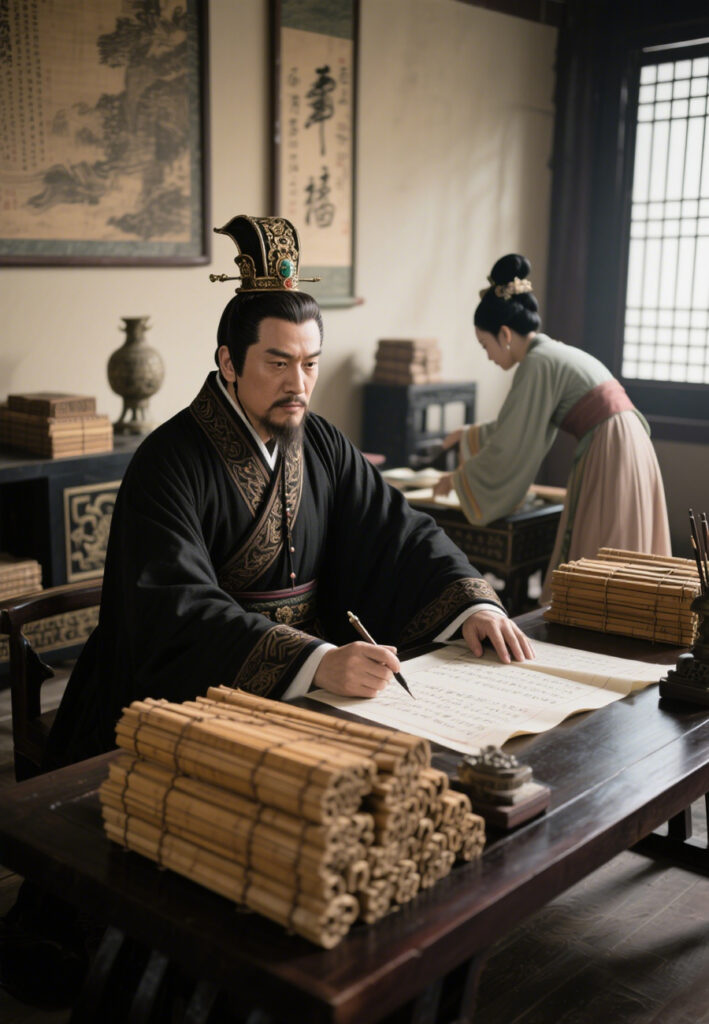
- NOT an eye shield! Not for blocking sun or hiding a wonky eye.
- IT’S AN EMPEROR POWER-UP! It packed four awesome functions into one funky accessory:
- Posture Cop: Jingle-jangle! “Stand tall, look ahead, be majestic!”
- Focus Master: Blur the small stuff, zero in on the big picture. “Imperial Focus Mode: Activated.”
- Intimidation Pro: “Keep ’em guessing, keep ’em respectful. Mysterious Emperor Mode: Engaged.”
- Ultimate Status Symbol: “I’m the Emperor. You’re not. This hat says it all.”
Next time you see a picture of Qin Shi Huang or any ancient Chinese emperor, take a closer look at that “pearl curtain” on their hat. It wasn’t about fashion or shade. It was a brilliant ancient “Emperor Behavior & Power Management System” – all built into some dangling beads! It helped the emperor walk taller, see clearer (metaphorically!), project more power, and scream “I’m in charge!” without saying a word. Pretty clever, huh?


